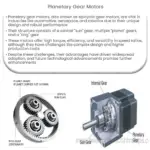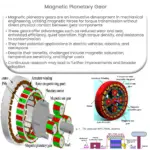Understanding Circular Motion: The Basics of Centripetal Force and Velocity
Circular motion is a fundamental concept in physics, characterized by the movement of an object along a circular path. This type of motion is governed by two crucial elements: centripetal force and velocity. Understanding these components is key to grasping the principles of circular motion in various physical phenomena, from planetary orbits to the operation of centrifuges.
Centripetal Force: The Force That Keeps Objects on a Circular Path
Centripetal force is the invisible force that acts on an object moving in a circular path, directing it towards the center of the circle. Contrary to common belief, it’s not a new kind of force, but rather a manifestation of the forces already in action, such as gravitational force, tension, or friction. The formula for centripetal force (( F_c )) is given by:
[ F_c = frac{mv^2}{r} ]
- m represents the mass of the object.
- v is the velocity of the object.
- r is the radius of the circular path.
This equation illustrates that the centripetal force is directly proportional to the mass of the object and the square of its velocity, and inversely proportional to the radius of the circle.
Velocity in Circular Motion
Velocity in circular motion is not just about how fast an object travels but also its direction. As the object moves in a circle, its velocity vector is always tangent to the circular path, meaning it constantly changes direction. This constant change in direction is what we perceive as acceleration, known as centripetal acceleration (( a_c )). It’s given by:
[ a_c = frac{v^2}{r} ]
Here, ( a_c ) is the centripetal acceleration, ( v ) is the velocity, and ( r ) is the radius of the circle. It’s important to note that even if the speed remains constant, the changing direction means there is still acceleration.
In summary, circular motion involves a balance between velocity and centripetal force. The centripetal force acts towards the center of the circle, ensuring that the object follows a curved path, while the velocity keeps changing direction to maintain the motion along this path.
Applications and Implications of Circular Motion
Circular motion is not just a theoretical concept but has practical applications in various fields. In astronomy, it helps explain the orbits of planets and moons, governed by the gravitational pull of larger celestial bodies. In technology, centrifuges use circular motion to separate substances based on density, crucial in medical laboratories for blood analysis. Amusement park rides like Ferris wheels and roller coasters are designed based on principles of circular motion, ensuring safety and thrill for riders.
The Role of Centripetal Force in Real-World Scenarios
Centripetal force plays a vital role in everyday phenomena. For example, when a car turns a corner, the friction between the tires and the road provides the necessary centripetal force to keep the car on its curved path. In celestial mechanics, the gravitational pull of the sun provides the centripetal force that keeps planets in their orbits. Understanding the balance and interplay of forces in such scenarios is crucial for advancements in engineering and science.
Challenges and Misconceptions
A common misconception about circular motion is the existence of a force called ‘centrifugal force’ that supposedly acts outwardly on an object in a circular path. However, this is not a real force but a perceived effect due to the inertia of the object moving in a circle. Addressing such misconceptions is essential for a clear understanding of physics principles.
Conclusion
Circular motion, with its integral components of centripetal force and velocity, is a cornerstone concept in physics. It explains a wide array of natural and man-made phenomena, from the orbits of celestial bodies to the functioning of everyday machinery. By understanding the fundamental principles of circular motion, we can better comprehend and predict the behavior of objects in motion, paving the way for innovative technological solutions and deepening our appreciation of the natural world. The elegance of circular motion lies in its simplicity and universality, demonstrating the cohesive nature of physical laws that govern our universe.




